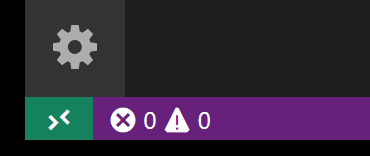Welcome to the CHORUS Web User Interface! This part of the platform provides a web-based interface to interact with CHORUS, leveraging the power of Next.js to deliver a responsive and dynamic user experience.
The CHORUS Web UI is built with Next.js, a React framework that supports both client-side and server-side rendering. This approach ensures optimal performance and responsiveness across all devices.
- Frameworks: Next.js
- Programming Language: TypeScript
- Engines: Node, pnpm
- Code Quality Tools: ESLint, Prettier, husky
- CSS Framework: Tailwind CSS,
- Design System: shadcdn/ui
- Testing Framework: Jest
- Clean Architecture Principles: This project adheres to the principles of clean architecture, including separation of concerns, dependency inversion, and the use of interfaces and abstractions to promote modularity and maintainability.
- src/domain
- src/domain/use-cases
- Application-specific business rules, representing the actions the system can perform.
- src/domain/repository
- Interfaces for data access, defining the methods for interacting with data sources.
- src/domain/model
- Core business entities and value objects, encapsulating the business logic and attributes.
- src/domain/use-cases
- src/data
- src/data/repository
- Implementations of the domain repository interfaces, handling data operations.
- src/data/data-source
- src/data/data-source/chorus-api
- Data source implementation for interacting with the Chorus API.
- src/data/data-source/local-storage
- Data source implementation for interacting with local storage.
- src/data/data-source/chorus-api
- src/data/repository
To set up your development environment for CHORUS Web UI, you will need:
- Docker: A platform for developing, shipping, and running applications inside containers.
- Dev Containers Extension for Visual Studio Code: Enhances your development experience by enabling you to code inside a Docker container.
Start by cloning this repository to your local machine:
git clone https://github.com/CHORUS-TRE/chorus-web-ui.git
cd chorus-web-ui-
Open the project in a dev container
The project includes a .devcontainer folder at the root. Dev Containers allow for seamless development inside a Docker container, ensuring a consistent and fully-prepared development environment. Learn more about Dev Containers here.
To open the project in a Dev Container:
- Ensure the Dev Containers extension is installed in Visual Studio Code.
- Click on the green arrows in the lower left corner of VS Code (as shown below).
- Select "Reopen in Container" from the menu.
Once opened in the container, you'll have access to a terminal for interaction.
-
Install Dependencies and Run the Development Server
Install the necessary packages:
pnpm install
Start the development server:
pnpm dev
Your application will now be running on the specified localhost port. The development server will automatically refresh upon any changes to the code.
-
Testing
- No E2E tests for now, as we use ViewModels which renders dummy data.
- Good to know: Since async Server Components are new to the React ecosystem, Jest currently does not support them.
- https://nextjs.org/docs/pages/building-your-application/testing/jest
- Integration tests
pnpm test
- Testing Your Application
- Add or update tests in
__tests__/. - Example tests for components and pages are provided, such as for the Home component.
- Add or update tests in
-
Developing Your Application
- Main Page: Edit src/app/index.tsx to modify the homepage.
- New Pages: Create additional pages and routes in the src/app directory.
- Shared Components: Develop reusable components like headers or footers in the src/components folder.
-
Styling, Design System
- We use shadcdn/ui as a design system.
- Use
pnpm dlx shadcn-ui@latest add <compnent>to add components
-
Code versionning
- Use Conventional Commits https://www.conventionalcommits.org/en/v1.0.0/ for your message (so later we can use it to make automatic semantic versionning)
-
Format:
<type>(<scope>): <subject>(<scope>is optional)feat: add cat greetings ^--^ ^---------------^ | | | +-> Summary in present tense. | +-------> Type: chore, docs, feat, fix, refactor, style, or test.
-
- git runs a pre-commit hook before pushing, with eslint, prettier and test
- Use Conventional Commits https://www.conventionalcommits.org/en/v1.0.0/ for your message (so later we can use it to make automatic semantic versionning)
Local Production Testing
Build and run the production application locally:
docker build -t chorus/web-ui .Local storage mode
echo "DATA_SOURCE=local" > .env
echo "DATA_SOURCE_LOCAL_DIR=./.local-storage" >> .env
echo "DATA_SOURCE_API_URL=https://chorus-tre.com/api/v1" >> .env
docker run --rm --env-file .env -v $(pwd)/.local-storage:/app/.local-storage -p3000:3000 chorus/web-uiAPI mode
echo "DATA_SOURCE=api" > .env
echo "DATA_SOURCE_LOCAL_DIR=./.local-storage" >> .env
echo "DATA_SOURCE_API_URL=https://chorus-tre.com/api/v1" >> .env
docker run --rm --env-file .env -p3000:3000 chorus/web-uiAccess your application at localhost:3000.
For further assistance or inquiries, feel free to open an issue in the repository.
Any use of the software for purposes other than academic research, including for commercial purposes, shall be requested in advance from CHUV.
